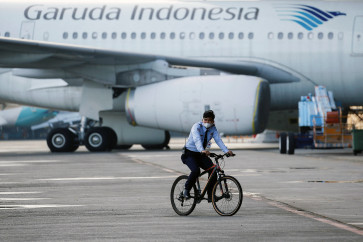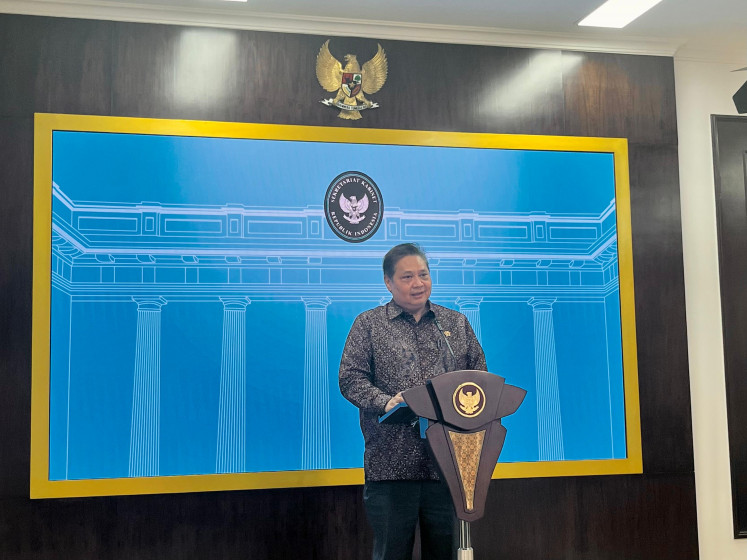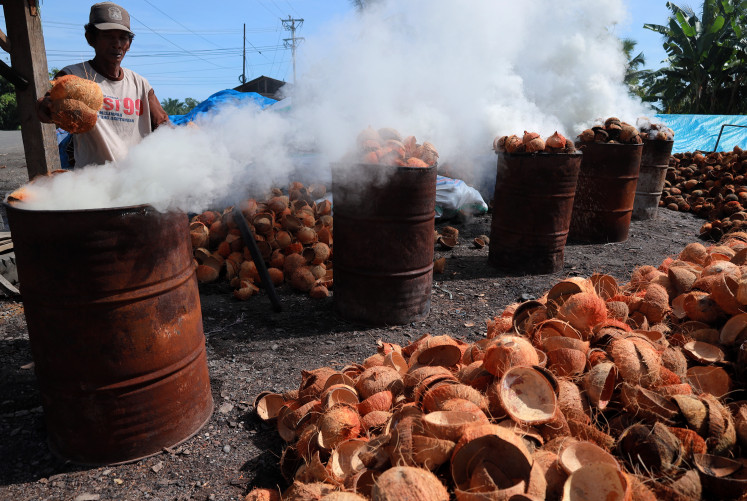Endless slurp: Behind Indonesia's love of instant noodles
Change text size
Gift Premium Articles
to Anyone
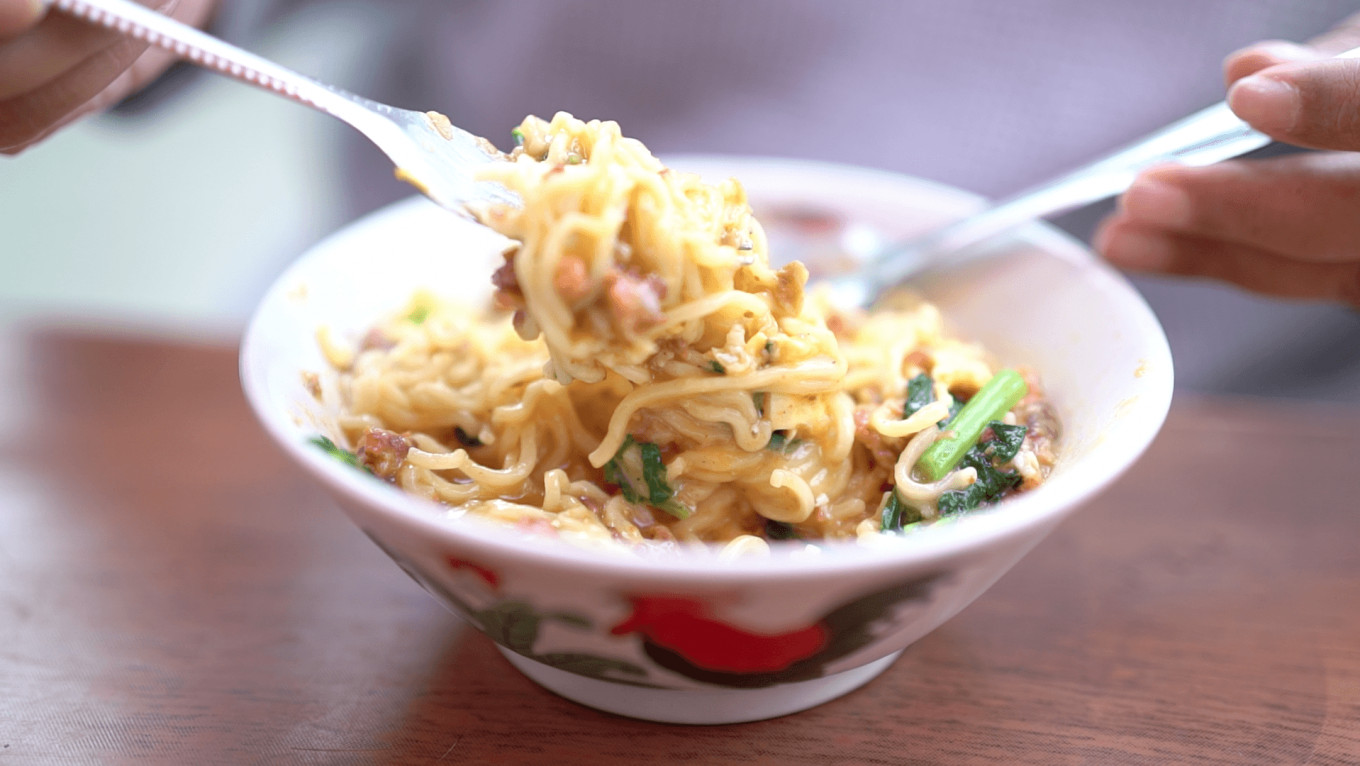
Why do Indonesians have such an attachment to instant noodles?
A number of Indonesians share the memory of sipping chicken-flavored instant noodle soup while watching the rain pour down outside of their window. At the very least, that image, ingrained through years of advertisements, resides in their minds. It is one that presents instant noodles as a comfort food that makes everything better, Indonesia’s very own chicken soup for the soul.
Today, instant noodles are practically a daily good that transcends class and circumstances.
But how did a nation dominated by rice and cassava-eating people develop such a united love for a wheat noodle product? Food researcher Monika Swastyastu said the addiction was the result of United States food export policies in the 1960s.
Under Public Law 480, the US government was permitted to ship surplus commodities to friendly nations, either on concessional or grant terms, and Indonesia was one of the beneficiaries.
“The US had a surplus of wheat production in the 60s and 70s, which they sent to developing countries under a food propaganda scheme. Indonesia, which did not cultivate wheat, was one of the countries that received a massive amount of wheat,” said Monika, who is a researcher with culinary anthropologist collective Bakudapan.
She said the turning point came when Indonesia learned how to mass-produce food products from wheat. Then-president Soeharto instructed businessman Sudono Salim to open a wheat mill to produce flour, which would be the start of a decades-long wheat production monopoly under the Bogasari company. “It was followed by the emergence of Indofood, the producer of Indomie, which is also under the Salim Group conglomerate,” Monika said, referring to the group headed by Chinese-Indonesian tycoon Soedono Salim, or Liem Sioe Liong, who was close with Soeharto.
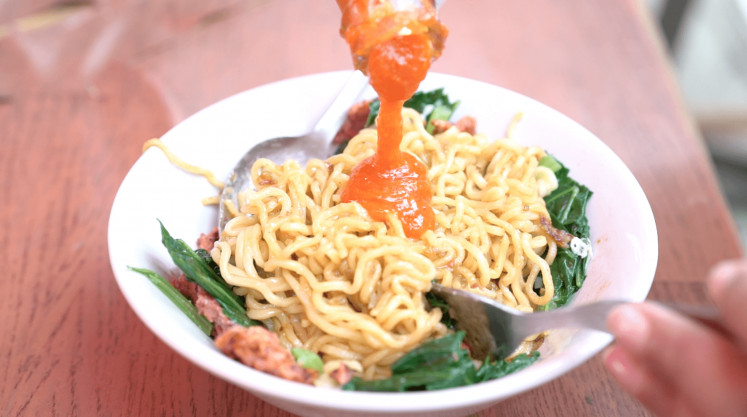
Indofood launched Indomie in 1972 with chicken noodle soup as its original flavor. It found further popularity with its mi goreng (friend noodle) variant. It had a mix of sweet, savory and spicy flavors, the result of combining sweet soy and chili sauce with a broth powder containing a healthy dose of monosodium glutamate (MSG). All of this was topped with crunchy fried shallots.
Launched in 1982, mi goreng was originally developed as an imitation of bakmi Jawa goreng (a Javanese take on chow mein noodles). It reportedly remains the most popular Indomie flavor and is distributed in North America, Europe, Africa, Australasia and various other regions.
The brand’s popularity resulted in a boon for the instant noodle business in the country, with other producers creating brands such as Mie Sedaap, which is produced by Indofood competitor Wings Food, as well as Supermie and Sarimi, which are also produced by Indofood but are sold at a lower price.
Its liberal use of MSG, or micin in Indonesian slang, has often been scrutinized by those promoting healthy eating habits, but it has also bred a generation of eaters who dub themselves – with humorous irony – the micin generation.
Too much of a good thing
For some, instant noodle consumption is a constant – and potentially dangerous – undertaking.
Sigit Tri Atmaja of Batam city in Riau was hospitalized in 2020 for symptoms that included chronic acid reflux, ulcers and kidney failure.
“Doctors said it was caused by consuming too much Indomie for too long,” said the 32-year-old.
Sigit used to eat at least two large portions of instant noodles daily. Each portion consisted of four instant noodle packages, three eggs and some cabbage.
“Besides using the prepackaged spicy powder from the instant noodle, I also always spice up my Indomie with shallots, garlic, leeks, celery and four kinds of chili peppers. I cannot eat anything that is not spicy,” he said.
With years of instant noodle meals, regular alcohol drinking, a love of sweetened beverages and a lack of fresh water consumption, Sigit collapsed in 2020 and was rushed to the hospital.
“I thought I would die,” Sigit said, remembering the excruciating stomach ache he endured.
The doctors ordered him to cut his instant noodle intake, drink more water and exercise.
“Now I only eat instant noodles twice a week. One of the special, large portions and one of the small portions,” he said. “I cannot give it up completely. It is the tastiest food in the world.”
More than a feeling
The growing global recognition of Indonesia’s instant noodle has also become a source of pride for Indonesians. A recent example was when the Los Angeles Times placed the mi goreng barbecue variant on top of its 2019 “Instant ramen power rankings”.
“A kind of national pride comes to us when Indonesian products receive any kind of appreciation from international publications. This was also the case when the Indonesian rendang was named one of the best foods in the world. Acknowledgement from ‘super power’ countries can inspire nationalist sentiment, an emotional bond that is spearheaded by a dish, which is a fundamental aspect of a collective identity,” Monika said.
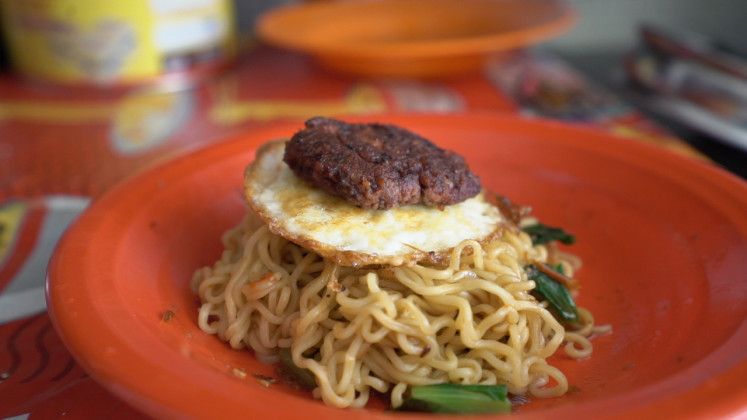
Beyond the dinner table, Indomie has established its name in popular culture. Rich Brian, an Indonesian rapper based in the US, features Indomie in his music video “Love in My Pocket” (2020). In 2019, a pair of fan-made custom Air Jordan 1 Yin Yang shoes with a mi goreng color palette was widely shared online.
Rosa Aji Mahesa, a 32-year-old cook at a restaurant in Kemang, South Jakarta, is a loyal Indomie mi goreng fan who has a habit of eating a bowl of the comfort food whenever something in his life goes wrong.
“Only yesterday, I ate a plate of Indomie goreng to mend my broken heart,” he said, shrugging his shoulders. “I mindlessly cooked a bowl of Indomie, ate it, and suddenly I felt okay.”
Aji said that since he was a child, he had eaten at least three servings of instant noodles a week.
Monika hypothesizes that Indomie’s popularity all around the archipelago was also propelled when it, along with other types of instant meals such as baby food and cookies, were infused with vitamins and minerals and then distributed to the most rural areas of the country to help with starvation problems.
“It was a convenient, quick fix to malnutrition happening in the periphery without having to touch the actual social and infrastructure problem,” she said.
Instant noodles work for everyone.
“For the underprivileged, ironically, Indomie is a way out when there is no land access to cultivate food such as cassava, rice, corn or vegetables. Meanwhile, for the privileged, Indomie is convenient for those with a city lifestyle that is modern, practical, easy, quick and efficient,” she said. “Now, if you feel under the weather, you will not look for jamu but a bowl of steaming hot Indomie noodle soup, right?”

